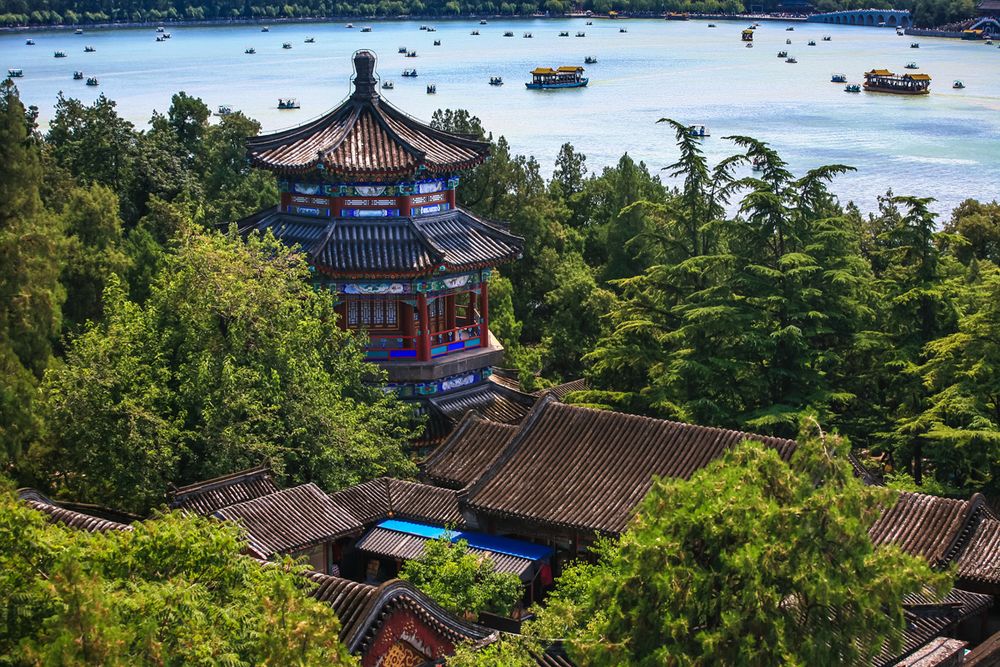The classic combination of granite cliffs and twisted pine trees, shrouded in a hazy haze, makes the Huangshan Mountains one of the ten… No, the five most popular places in China. A whole army of poets and artists praised the beauty of these mountains in their works. The ancient hermits who were looking for a place for meditative solitude on the slopes of Huangshan would escape from the crowds of tourists flooding the mountain trails these days. But even now there are minutes of undisturbed peace here. It’s not worth talking about the landscapes of Huangshan — you admire them with bated breath.
The aborigines of Huangshan claim that it rains here 200 days a year. It makes sense to devote a few days to the mountains — it will be easier to choose fine hours for a rush to the top. Spring is a time of fogs. Most often, the haze adorns the mountains, but sometimes it thickens so much that you don’t see anything but a string of yellow rain capes wandering up an indistinguishable path. In summer, it rains in the mountains and there are storms. The best time for climbing and walking is autumn. It should be borne in mind that at high altitude the air temperature does not rise above 20 ° C — be prepared.
Attractions
Although Tunxi is called the “city of Huangshan”, you still have to get from there by bus to Tankou, a village located at the very foot of the massif. This is the main base where trekkers stock up on everything they need, leave extra luggage and buy tours. You can live in Tankou, but if the budget allows, it is better to find a shelter in the mountains.
The village consists of two main streets, on the larger of which — Feitsuilu – there are restaurants, supermarkets and hotels. The second street is called Yanxijie and runs along the river, perpendicular to Feicuil. You can get to Yanxijie by going down the stairs from the bridge.
Ascent and descent
No matter how you are going to climb Huangshan, you will have to pay a ruinous entrance fee. The ticket offices are located on the eastern route near the Yungu station or at the Tsyguange station, at the very beginning of the western route. Special buses run from Tankou to both stations.
There are three routes of climbing to the peaks of Huangshan: short and heavy, long and even heavier and very short and light. The eastern route starts at the Yungu station, the western route starts at the parking lot at the Tsyguange Temple. There is a circular route lasting about 10 hours: you climb the eastern slope and descend the western one in one light day. It is suitable for physically strong and slightly insane trekkers. In addition, those walking along it risk missing some spectacular viewpoints. The most optimal tour looks like this: you get up early, take the morning bus from Tunxi and start climbing along the eastern route. After reaching the top, you spend the night in one of the mountain shelters, admire the sunrise, and then go down the western slope and catch the afternoon bus to Tunxi. Many travelers spend several days at the top, exploring various picturesque corners of the mountains. Do not underestimate the complexity of the Huangshan routes: climbing granite steps will be a serious test of the strength of your legs, both on the ascent and on the descent.
Most of the tourists crowd around the upper station of the cable car. Most of the trails connecting the various peaks of Huangshan pass through here. Real travelers prefer unbroken routes — for example, to the Sihai Canyon. This is a less well-worn throne, where groups with megaphone guides do not appear at the head.
Going to the mountains, do not forget a supply of water and food, warm clothes and a rain cape. The higher you climb, the more expensive food and drink will cost. You will not need a guide in the mountains: the trails are well marked and equipped with signs in English.
Hot springs
A useful place, again accessible after many years of repair. If you want to warm up tired bones after climbing exercises, you will be offered mineral baths with the addition of coffee, medicinal infusion or wine. Small fish live in a special pool, which gently eat the dead skin from the feet of swimmers. After bathing, we recommend a foot massage. Visitors are offered free snacks and tea.
The most convenient way to get to the springs is to arrange a free transfer with the help of your hotel. A shuttle bus will take you from the Tanks to the Yungu station, from where you can go down to the springs on foot.
